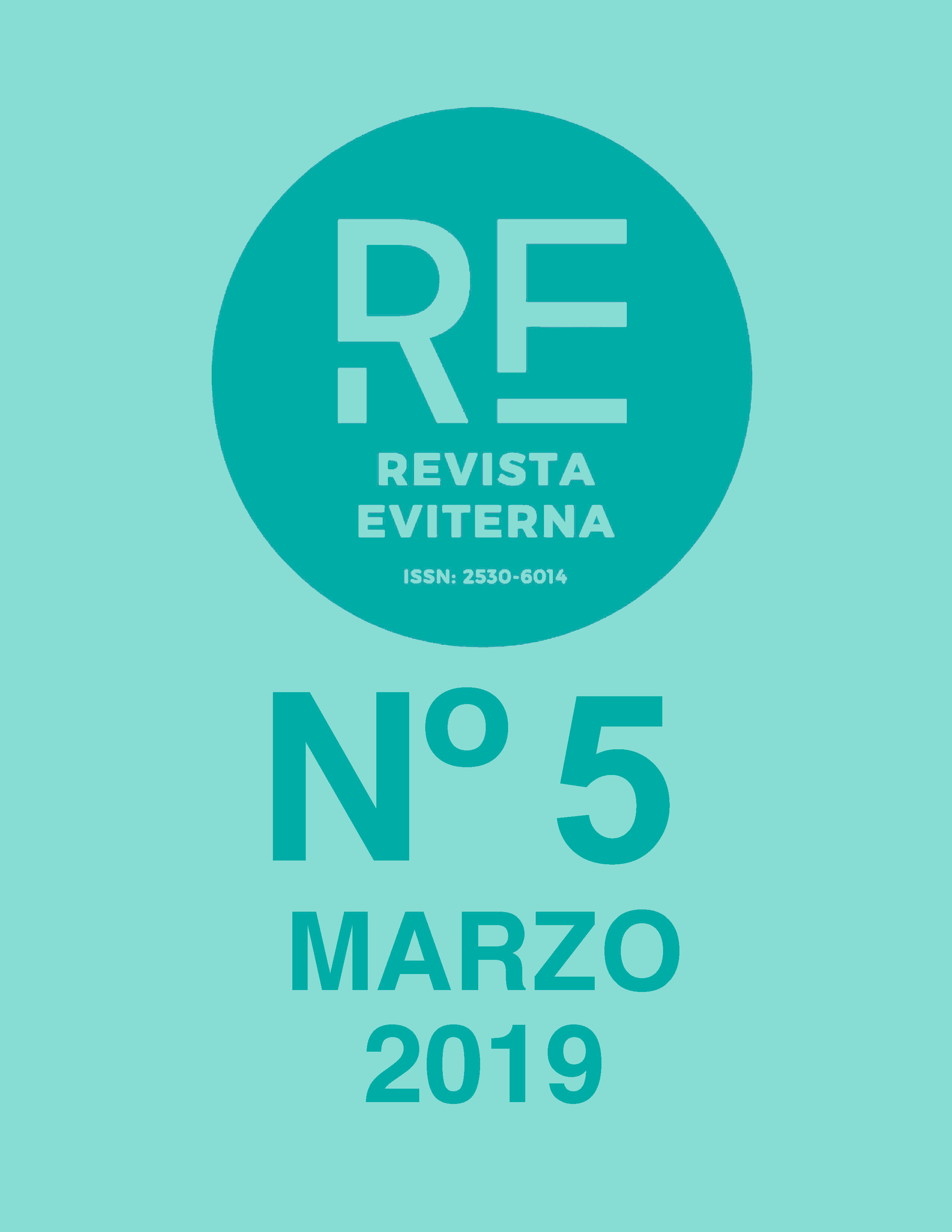Female self-portraiture: imprisoned spaces and minds
DOI:
https://doi.org/10.24310/Eviternare.v0i5.8088Keywords:
Francesca Woodman; Rebecca Horn; body; space; performance; photography; identity; phenomenology; abjectAbstract
This article examines Francesca Woodman and Rebecca Horn’s oeuvre, establishingconnections between their work, their work and their biographies, their artworks and their selves. In their art practices, they create prison-like and claustrophobic environments that reflect their inner selves, their traumas and their anxieties. Through the embodiment of space, they portray themselves, thus, blurring the limits between inner self and outer world, between body and space. By closely analysing their work and their lives, this article sets forth the idea that their work can be read as a dynamic and visual autobiography, as kinetic and psychological self-portraits of these two female artists.
Downloads
Metrics
Publication Facts
Reviewer profiles N/A
Author statements
Indexed in
-
—
- Academic society
- N/A
- Publisher
- Universidad de Málaga
References
BACHELARD, Gaston (1994), The Poetics of Space, Beacon Press: Boston, Massachusetts.
BRONFEN, Elisabeth (2010), ‘Visuality-Textuality: An Uncanny Encounter’, Image & Narrative, 11, pp. 7-24.
CHADWICK, Whitney (ed.) (1998), Mirror Images. Women, Surrealism, and Self-Representation,The MIT Press: Massachusetts.
CONLEY, Katherine (2013), Surrealist Ghostliness, University of Nebraska Press: Lincoln; London.
FREUD, Sigmund (1976), ‘The Uncanny’, New Literary History, 7:3, pp. 619-645.
FREUD, Sigmund (1946), Civilization and its Discontents,The International Psycho-Analytical Library: London.
GILMAN, Charlotte Perkins (1892), ‘The Yellow Wall-Paper’, New England Magazine, pp. 647-656.
JONES, Amelia (1998), Body Art/Performing the Subject, University of Minnesota Press: Minneapolis.
KENNEDY, Meegan (2012), ‘Modernist Autobiography, Hysterical Narrative, and the Unnavigable River: The Case of Freud and H.D.’, Literature and Medicine, 30:2, pp. 241-275.
KRENS, Thomas (1993), Rebecca Horn, exh. cat., Guggenheim Museum, New York.
KRISTEVA, Julia (1982), Powers of Horror. An Essay on Abjection, Columbia University Press: Chichester; New York.
LOMAS, David (2012), 'Becoming Machine: Surrealist Automatism and Some Contemporary Instances', Tate Papers, 18, p. 33, http://www.tate.org.uk/research/publications/tate-papers/18/becoming-machine-surrealist-automatism-and-some-contemporary-instances(10 October 2018).
LUX, Harm (1992), Francesca Woodman. Photographic Works, exh. cat., Shedhalle Zürich; Westfälischer Kunstverein, Münster.
MERLEAU-PONTY, Maurice (1964), The Primacy of Perception: And Other Essays on Phenomenological Psychology, the Philosophy of Art, History and Politics, Northwestern University Press: Illinois.
RICHES, Harriet (2004), ‘A Disappearing Act: Francesca Woodman’s Portrait of a Reputation,’ Oxford Art Journal, 27:1, pp. 97-113.
SCHWARTZMAN, Madeline (2011), See Yourself Sensing. Redefining Human Perception, Black Dog Publishing Limited: London.
SHOWALTER, Elaine (1993), ‘On Hysterical Narrative’, Narrative, 1:1, pp. 24-35.
SLEEMAN, A. J., KENT, S., RAWES, P., DEZEUZE, A. (2007), ‘Drawing the Line: A Round Table on Rebecca Horn’, Papers of Surrealism, 5,
http://discovery.ucl.ac.uk/45999/(10 October 2018).
ZWEITE, Armin (ed.) (2005), Rebecca Horn: Bodylandscapes. Drawings, Sculptures, Installations 1964-2004, exh. cat., Hayward Gallery Publishing: London.
Downloads
Published
How to Cite
Issue
Section
License
All the contents published in Revista Eviterna are subject to the Creative Commons Reconocimento-NoComercia-Compartirigual 4.0 license, the full text of which can be found at <http://creativecommons.org/licenses/by-nc-sa/4.0>
They may be copied, used, disseminated, transmitted and publicly exposed, provided that:
The authorship and original source of your publication (Journal, editorial and URL of the work) are cited.
They are not used for commercial purposes.
The existence and specifications of this use license are mentioned.

Copyright is of two kinds: moral rights and patrimonial rights. Moral rights are perpetual, inalienable, inalienable, inalienable, inalienable and imprescriptible prerogatives.
In accordance with copyright legislation, Revista Eviterna recognizes and respects the moral rights of the authors, as well as the ownership of the economic right, which will be transferred to the University of Malaga for dissemination in open access.
The economic rights refer to the benefits obtained by the use or disclosure of the works. Revista Eviterna is published in open access and is exclusively authorized to carry out or authorize by any means the use, distribution, disclosure, reproduction, adaptation, translation or transformation of the work.
It is the responsibility of the authors to obtain the necessary permissions of the images that are subject to copyright.







12.png)



